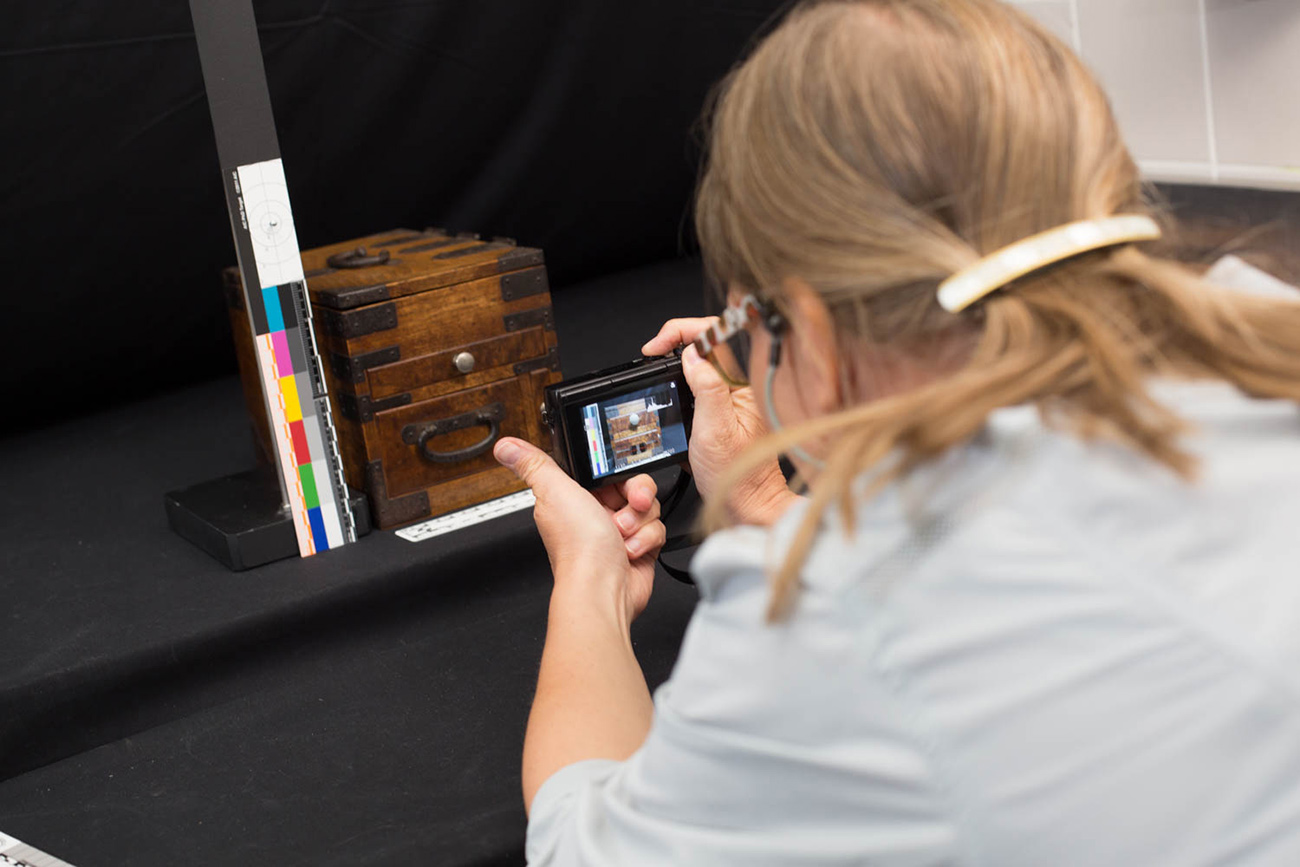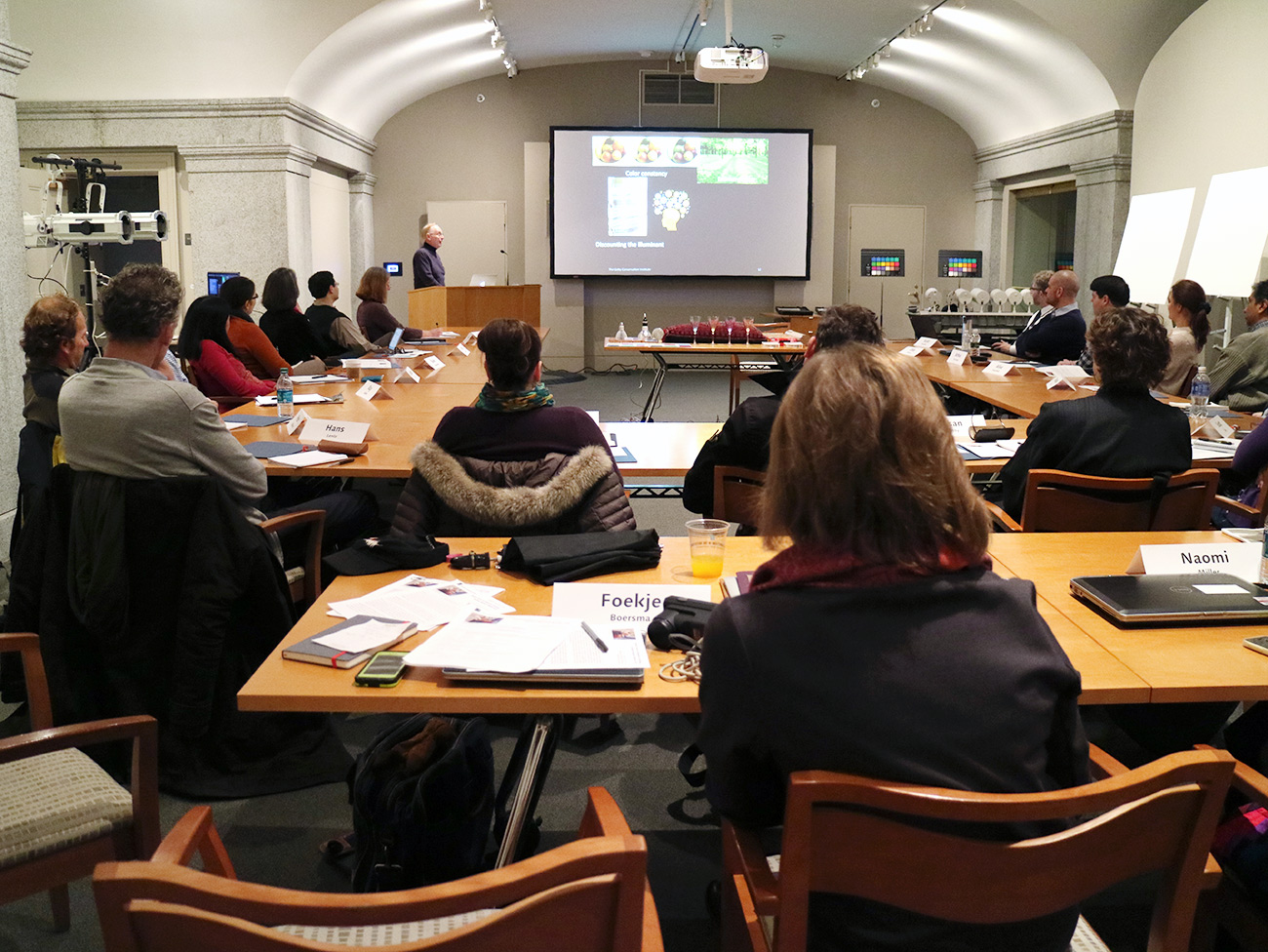Managing Collection Environments is a multiyear initiative that addresses compelling research questions and practical issues pertaining to the control and management of collection environments in museums. To mark a new nine-month training course for professionals offered as part of the project, senior project specialist Foekje Boersma introduces the research questions the initiative seeks to address and explains why determining a “safe” museum environment is more complex than it appears. —Ed.
Those responsible for the care of cultural heritage collections are always aware of the impact of the physical and ambient environments on collections’ long-term preservation. Materials susceptible to moisture such as wood, paper and other hygroscopic materials will be affected by extreme and prolonged climatic conditions: high relative humidity (RH) results in swelling of the material and may cause mold growth, whereas extreme low RH causes shrinkage and cracking.
Beginning in and throughout the twentieth century, conservation professionals tried to establish what exactly constitutes a safe collections environment. “Safe” being conditions that result in the least amount of damage over time. Scientific research, together with their observations in the field, increased our understanding of the agents of deterioration and their workings, but were based on specific typologies of collections, museums or climate. By the second half of the twentieth century, many museums around the world nonetheless followed what was regarded as the safest path to managing the climate in museums, by controlling indoor conditions to a fairly narrow temperature and RH band. As these parameters became universally accepted and implemented by collecting institutions, and as air-conditioning technology advanced, they became more rigid over time, resulting in a one-size-fits-all approach to environmental management. This approach did not consider local climates, building and collection specifics, and available resources.
In his 1978 book, The Museum Environment, Garry Thomson raised a question we are still trying to answer today:
“How much RH [relative humidity] variation can be tolerated? There could not be a better question than this to expose the inadequacy of the quantitative data so far collected on the effects of climatic factors on deterioration…The question of how constant RH needs to be to ensure that no physical deterioration will occur at present remains unanswered. The standard specification of +/– 4 or 5% in RH control is based more on what we can reasonably expect the equipment to do than on any deep knowledge of the effect of small variations on the exhibit.”
As the international conservation community works to review and revise these long-held positions, this work has been made more complicated by the need for new guidelines to consider global climate change and an uncertain future with regard to the availability and affordability of energy. These challenges have initiated a fervent debate on whether (or not) and to what extent environmental standards for cultural heritage collections should be adapted, especially since the broadening of the acceptable range of climate fluctuations (temperature and relative humidity) is seen as an effective way to reduce energy consumption.

Documenting one of the objects in a long-term study to better understand the response of hygroscopic materials to climatic fluctuations at both the micro and macro scale. Photo: Evan Guston
Managing Collection Environments Initiative
In a world in which museums and other collecting institutions debate implementing sustainable strategies, the role of the conservator becomes ever more crucial in the development of both pragmatic and creative solutions. Museum directors and other professionals look to the conservation field for guidance on matters of sustainable preservation approaches for collections and today’s conservators should be prepared to provide leadership on sustainable environments for collections. With this in mind, the Getty Conservation Institute created the Managing Collection Environments initiative (MCE)—a multiyear initiative combining scientific research with fieldwork and education in an effort to address outstanding issues and questions relating to the management of collection environments.
Addressing the need for more research on real objects in real conditions, MCE’s scientific research is combining laboratory research on a microscale with studies of climate-induced damage in the field. Measuring the mechanical properties of naturally aged, historic materials will provide a better understanding of climate-induced damage mechanisms, which in turn will inform long-term strategies for the preservation of collections. These studies will help identify more precisely the conditions under which irreversible damage occurs as a result of climatic agents of deterioration.

Measuring the width of a crack in an object under long-term study using a low-tech tool. Photo: Evan Guston
MCE’s education work is designed to support the role of the conservator in the decision-making process towards more sustainable strategies by demonstrating the holistic approach of balancing building, collection and human-comfort needs with risks, and by exploring the implementation of passive solutions sympathetic to local climates. Yet as important as this type of technical knowledge is within a conservator’s “tool kit,” the nature of managing collection environments—which necessarily involves working with a range of colleagues both within and beyond the museum—requires interpersonal skills that will facilitate decisions, requiring the support of other museum professionals. It also requires a broader understanding of the contexts in which conservation operates.
For this reason, MCE is launching this month Preserving Collections in the Age of Sustainability, an innovative three-phase course that brings together different disciplines, emerging knowledge, and the skills required to communicate and build consensus on the most appropriate approaches for climate control.
There are strong arguments for museums and other collecting institutions to strive for sustainable strategies, implementing both pragmatic and creative solutions. MCE addresses the challenges of dealing with the uncertainties and complexities of the museum environment and supports the professional conservation field with available knowledge and thinking.

In February 2016, MCE held “Master Class on Museum Lighting: Options Beyond White LED,” which presented a structured framework for understanding and discussing recent advances and methodologies for effective use and evaluation of the new generation of LED lighting. Photo: Foekje Boersma
Next week on the Getty Iris, my colleague Joel Taylor will discuss MCE’s Preserving Collections in the Age of Sustainability course as it launches the first phase of its nine-month curriculum. Later this spring, look for posts from my colleagues working on MCE’s scientific research.





How to join to this learning this distant teaching?
Dear Shyam Bahadur Khanal,
The distant learning component is part of the Course Preserving Collections in the Age of Sustainability . This blog post (http://blogs.getty.edu/iris/conservation-training-course-blends-online-learning-intensive-workshop-and-distance-mentoring/) describes the course in more detail. The first course has just started and registration is now closed, but it is anticipated that this course model will have future iterations. If you would like to be informed of any of the GCI’s courses and workshops, please sign up for the free GCI bulletin (http://www.getty.edu/conservation/publications_resources/bulletin/), in which course announcements are included.
Also, it is anticipated that some of the teaching materials from the course will be made available on the GCI website in due course.
I hope this answers your question.
Kind regards,
Foekje